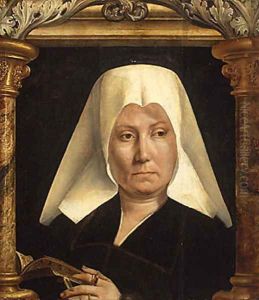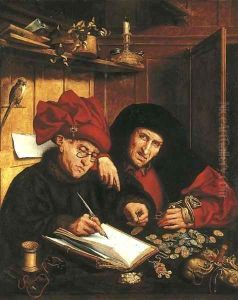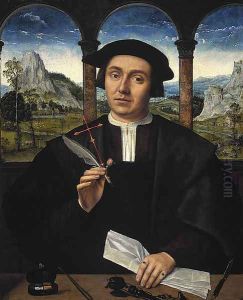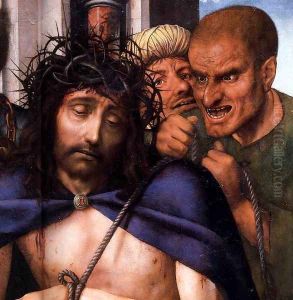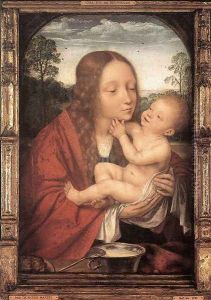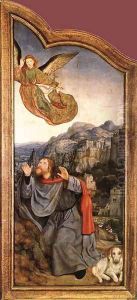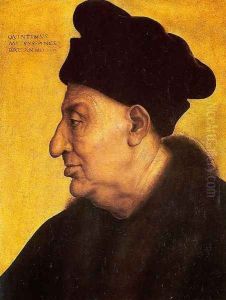Workshop of Quentin Massys Paintings
Quentin Massys, also known as Quinten Matsijs or Metsys, was a Flemish painter in the Northern Renaissance who founded the Antwerp school of painting. Born in 1466 in the city of Leuven, then part of the Duchy of Brabant, Massys is best known for his depiction of human character and his use of expressive emotion in his works. He initially trained as an ironworker or blacksmith, which was his father's trade, before turning to painting around the age of 27. This early training may have influenced his meticulous attention to detail and the tactile quality of textures in his painting.
Massys's works often reflected the society of his time, with a particular focus on the human condition, religious themes, and a touch of satire. He was active during a period when Antwerp was a burgeoning center for trade and culture, which allowed him to gain extensive patronage. His style blended the detailed realism typical of Early Netherlandish painting with influences from Italian Renaissance artists, whom he may have encountered through Italian merchants and their imported artworks, or possibly through a visit to Italy, although such a trip is not well-documented.
The artist is best known for two types of works: religious panels and genre scenes. His religious paintings demonstrate an emotional depth and convey the spiritual fervor of the time, while his genre scenes often contain a moral or satirical message. One of his most famous works is 'The Moneylender and His Wife' (1514), which showcases his skill in rendering different textures and surfaces while also reflecting on the morality of wealth and the human preoccupation with materialism.
Massys was also noted for his portraiture, which displayed a keen psychological insight into his subjects. His portraits are marked by a sense of realism and individuality that was ahead of his time.
After his death in 1530 in Antwerp, Quentin Massys's influence continued through his workshop, which was taken over by his sons, Jan and Cornelis Massys, who were also painters. They, along with other pupils and followers, helped perpetuate his style and contributed to the spread of the Antwerp Mannerist style. The workshop produced paintings that were in high demand, and many works from this period are attributed to the 'Workshop of Quentin Massys,' indicating that they were produced by his pupils and followers who continued his artistic legacy. The workshop played a significant role in the transition between the art of the early Renaissance and the more complex and ornate style of the High Renaissance and Mannerism in the Low Countries.

